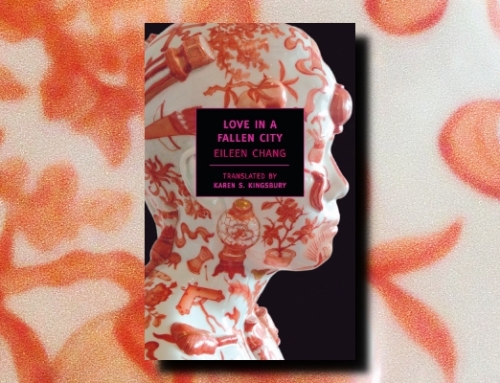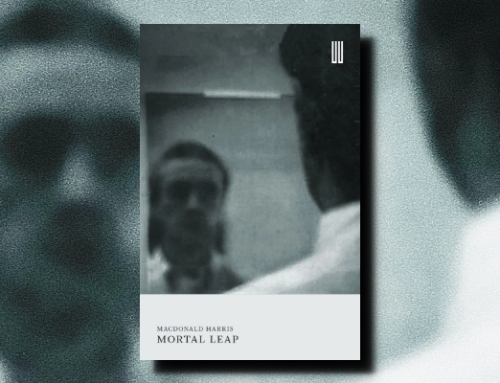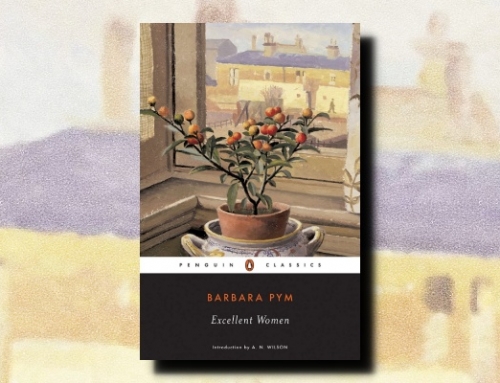Lord of Misrule by Jaimy Gordon (2010) McPherson (2010) 294 pp
When Lord of Misrule was announced as a National Book Award finalist, it was one of the only books on the list I hadn’t read that I was truly interested in looking up. It’s hard for a book published by a small press with a limited print run to get much notice, so I considered it a plus that this one did. For that book to be about a gritty horse racetrack in 1970s West Virginia . . . well, it certainly didn’t sound like the familiar story being rewritten year after year. It took me a while to get to reading it, primarily because, though attracted to it, I was also a little intimidated. After all, I know nothing about horse racing. Though knowledge of horse racing is certain to bring you closer to the book, I can say to those of you who may be wondering that such knowledge is not required to enjoy this remarkably unique novel.
This story takes place in the 1970s at an out-of-the-way racetrack named Indian Mound Downs in West Virginia. I think the book’s opening paragraph is fantastic as it introduces the Downs, the smells and redness, as well as the circular walking machine that is a metaphor for so much in the book.
Inside the back gate of Indian Mound Downs, a hot-walking machine creaked round and round. In the judgment of Medicine Ed, walking a horse himself on the shedrow of Barn Z, the going-nowhere contraption must be the soul of this cheap racetrack where he been ended up at. It was stuck there in the gate, so you couldn’t get out. It filled up the whole road between a hill of horse manure against the backside fence, stubbed with pale dirty straw like a penitentiary haircut, and a long red puddle in the red dirt, a puddle that was almost a pond. Right down to the sore horses at each point of the silver star, it resembled some woebegone carnival ride, some skeleton of a two-bit ride dreamed up by a dreamer too tired to dream. There’d been no rain all August and by now the fresh worked horses were half lost in the pink cloud of their own shuffling. Red dust from those West Virginia hills road in their wide open nostrils and stuck to their squeezebox lungs. Red dust, working its devilment, he observed to himself, but he shut his mouth. They were not his horses.
This paragraph also introduces Gordon’s ability with words — “woebegone carvinal ride” and “squeezebox lungs.” Her sentences, slightly off-kilter, manage to keep the already unique story that much more fresh, though sometimes they might be a bit difficult to read in their strangeness. That’s one great thing about this book: it can be a bit disorienting and may frustrate some, but that disorientation is part of what makes it worth reading. For example, in that first paragraph we meet Medicine Ed, an old man who’s spent his life on the racetrack, getting nowhere. What we read is a very close third-person narrative, so his diction comes out in the chapter. Each character has his or her own unique voice that carries into the fine writing. However, several times in the first 100 pages I got a bit lost when a new chapter opened. Who was speaking? And who were they talking about? This latter question arose because each character refers to the others in different ways. For instance, Medicine Ed refers to Maggie Koderer, the female protagonist, as “the frizzly hair girl,” and he refers to her boyfriend Tommy Hansel as “the young fool.” Until you catch on, it can be confusing.
It is not a fault; it’s simply a matter of getting into the rhythm of the book. Eventually we see that the multitude of characters wandering the Downs is actually only a few people. When that happens, we realize just how much we know about them, hearing about them from a variety of perspectives.
So above I said that one doesn’t need to have any knowledge of horse racing to enjoy this book. I stand by that statement, but there is one concept that certainly helps: the claiming race (which is explained in an epigraph). The claiming race, besides being the foundation for all of horse racing (apparently), is also one of the foundations of this book. It’s the only way that Indian Mound Downs keeps in business. It’s the only thing that brings these desparate characters together, a concept that represents hope and failure. It’s also what brings us four of our principal characters — Mr Boll Weevil, Little Spinoza, Pelter, and Lord of Misrule — the four horses these people bet their lives on, a process that brings them close together, whether for better or for worse.
At the center of it all is Maggie Koderer. Here she is, again from Medicine Ed:
For he liked the frizzly hair girl a little better now. Old Deucey had spied into the heart of this young woman and seen there slavery of the man-woman kind. Medicine Ed could see the chains on the girl. They were thick and heavy as railroad couplings, but they lay in a loose necklace round her neck and shoulders. She was no little bitty silky thing. The weight of them chains had raised muscles on her. She had a long bird neck with strong cords in it, and square shoulders. And Medicine Ed saw this: While the young fool ain’t looking — suddenly he had something else, probably the money he fixing to lose, on his mind — the frizzly hair girl lifted the heavy chains off her shoulders like a daisy chain and laid them down again. She stepped out from the place where the young fool thought she was and run away on goofered feet up into the clubhouse, gone to play some other horse than the master play. She was a slave but she had the power to ride the grandstand just like the master do, if she see her chance.
A lot goes unsaid, which matches the way these characters go about their life. The older woman Deucey shows up with her front teeth knocked out and that’s about all that’s said about it. I’m going to go along with this and not say much more about this book and all the terrible twists and turns it makes. It’s nice to leave with one more example of Gordon’s fine writing, though. Here she is describing the arrival of the most feared horse, the one that could make or break them all:
They were all looking for a van like a Chinese jewel box, like no horse van that had ever been seen on a backside, something red and black and glossy, with gold letters, LORD OF MISRULE, arched across each side. All the same when a plain truck with Nebraska plates rolled inot the Mound on the hottest day of the year, they knew who it was. They were watching, though the van was unmarked and dirty white, one of those big box trailers with rusty quilting like an old mattress pad you’ve given to the dog. The van bounced and groaned on its springs along the backside fence, headed for the stallman’s office. Red dust boiled around it. They blinked as it dragged two wheels through the puddle that never dried, the puddle that had no bottom. They all waited for the van to tilt and lurch to a stop; it didn’t even slow down. They peered through the vents when the van went by and saw the horse’s head, calm, black and poisonous of mien as a slag pile in a coal yard. He had a funny white stripe like a question mark on his forehead.









I’ve had my eye on this since Kevin’s review. I take it you didn’t find lack of familiarity with the subject matter a barrier then Trevor?
I had forgotten that Kerry had also reviewed this, here: http://hungrylikethewoolf.wordpress.com/2011/04/05/lord-of-misrule-by-jaimy-gordon/. Not sure if you’d seen that.
That’s right, Max. But I guess I should say that while I may not be familiar with horse racing, I am familiar with horses and competitive events involving them. The parents of my best friend growing up rode horses competitively in rodeos and “jackpots,” so I went to a fair number of these and, though not the Mounds in West Virginia, I recognize the stalls and the mud. They weren’t jockeys, though, they weren’t doing this kind of racing, and, as far as I know, there was no gambling — at least not formally authorized gambling. But I imagine had I grown up in a city, it would be even more foreign and perhaps a bit less accessible.
Max: I think a comparison might be They Shoot Horses, Don’t They?, which of course is about dance marathons, not horses. You don’t have to know about dance marathons to appreciate that nove and you don’t have to know a lot about horse racing (beyond the idea of “claiming” which the author does explain) to understand that aspect of this story. The value, as Trevor shows, is in the character portrayals.
[…] Opinions: Lizzy’s Literary Life, Cardigan Girl Verity, Walk With a Book, The Quivering Pen, The Mookse and the Gripes, Shelf Love. Did I miss yours? Let me know and I will add your review to the list. Share […]